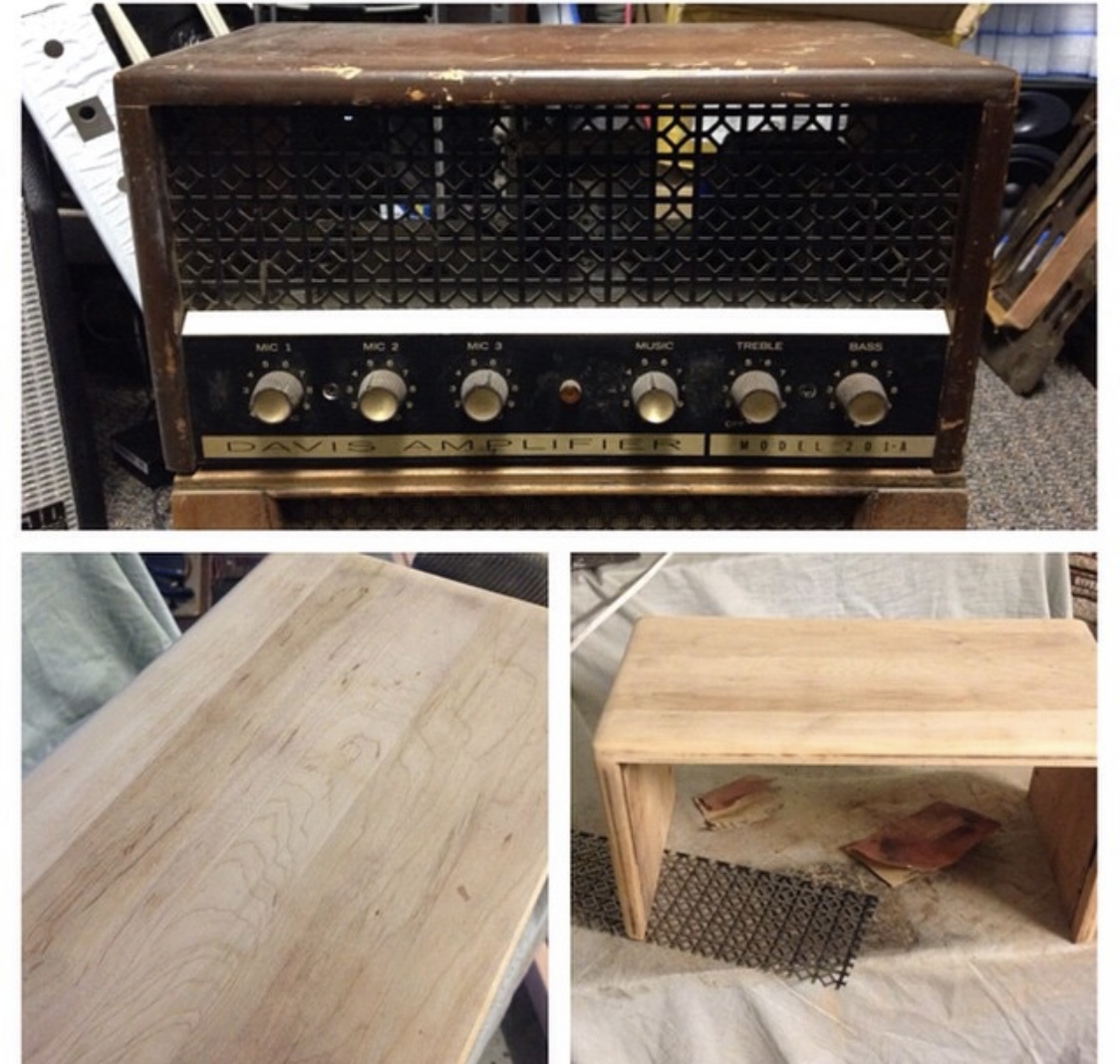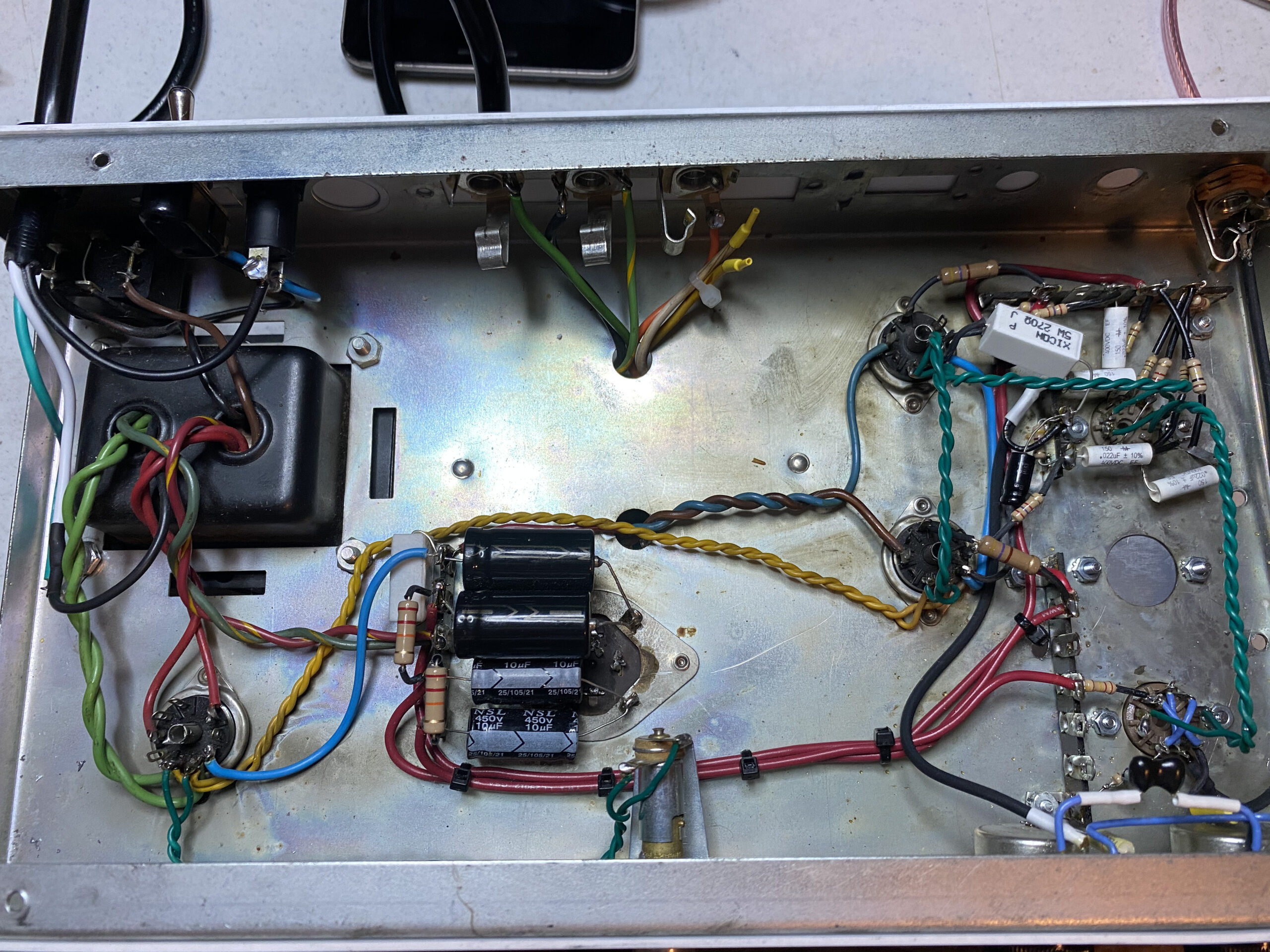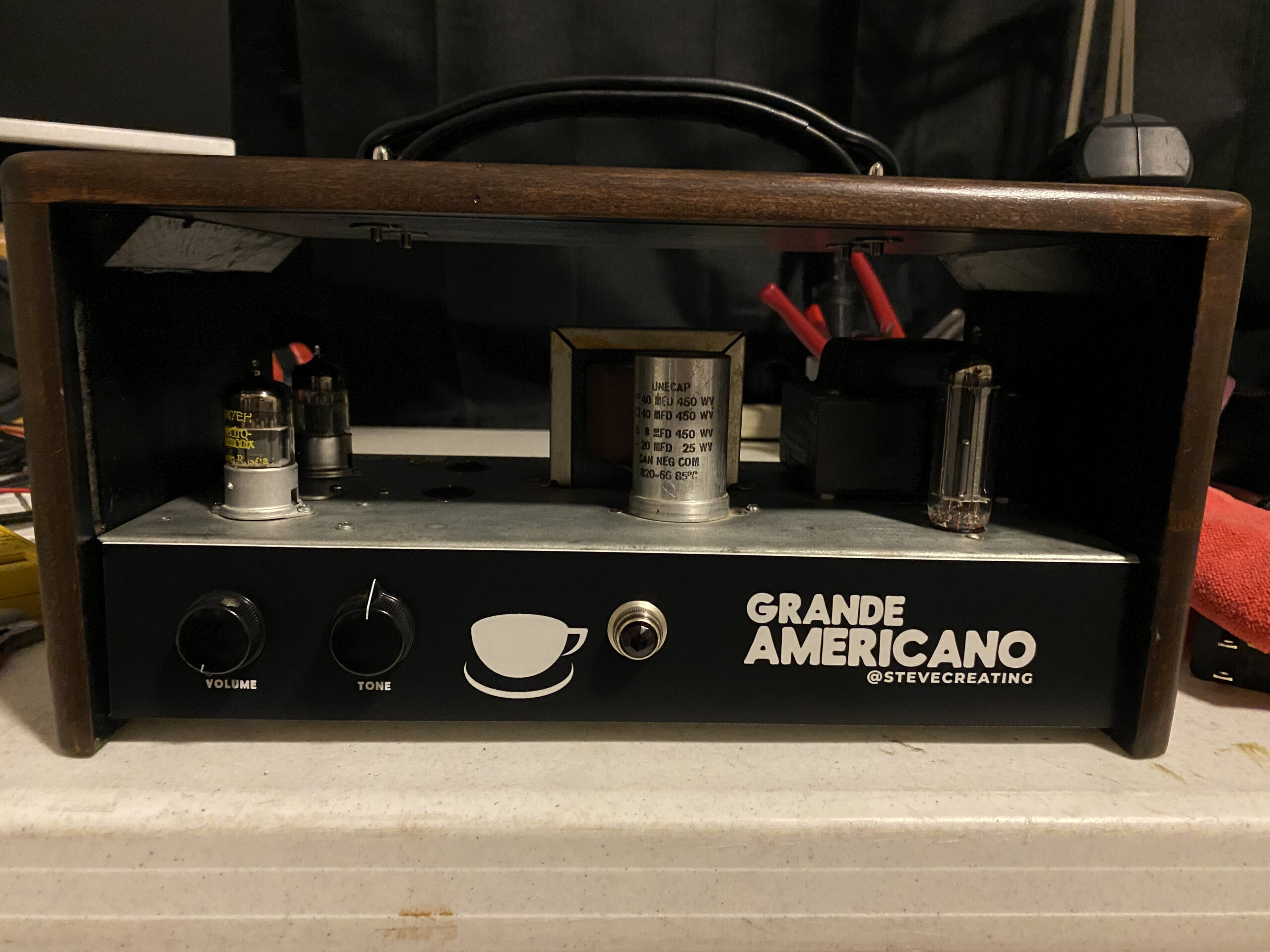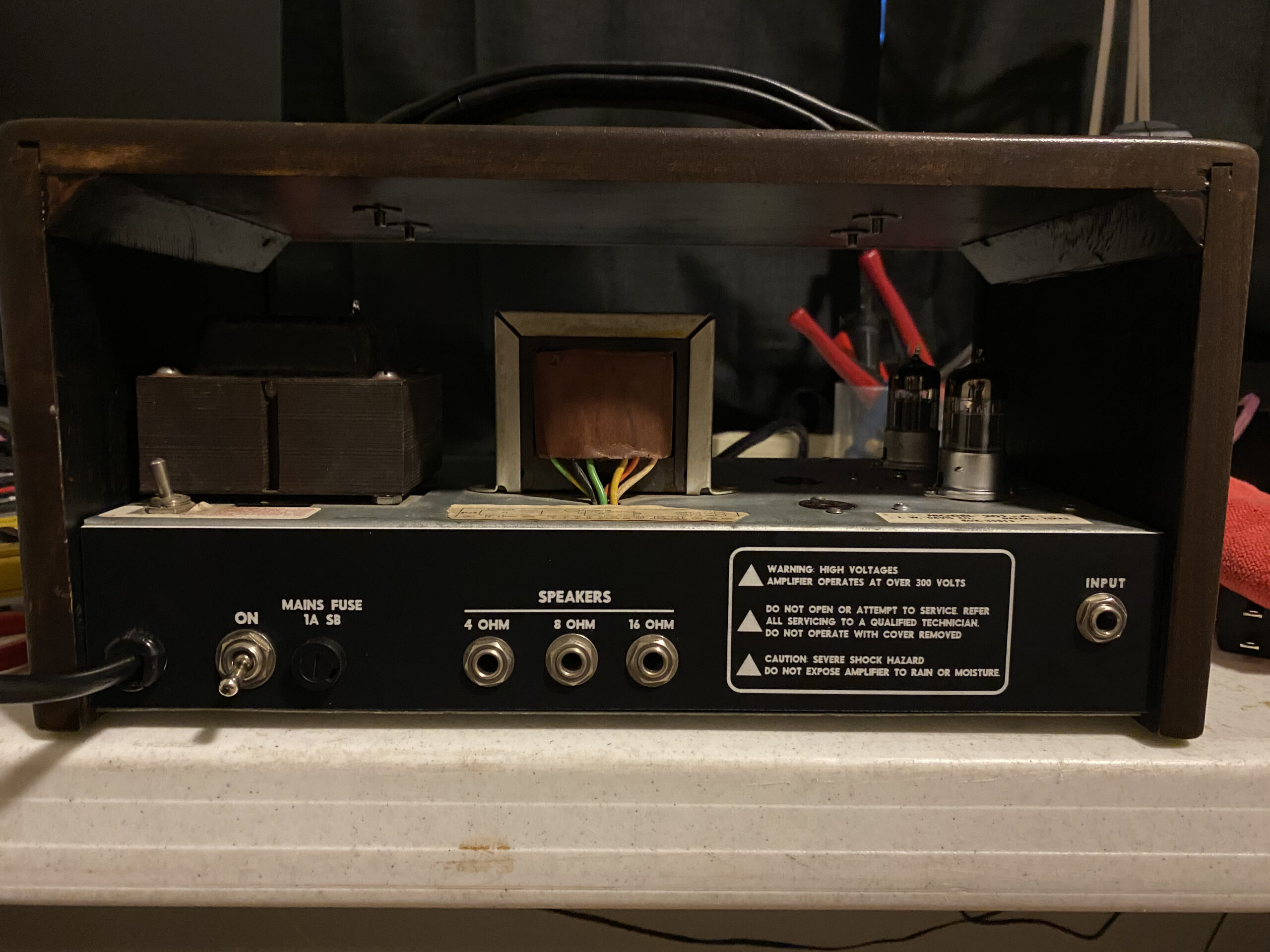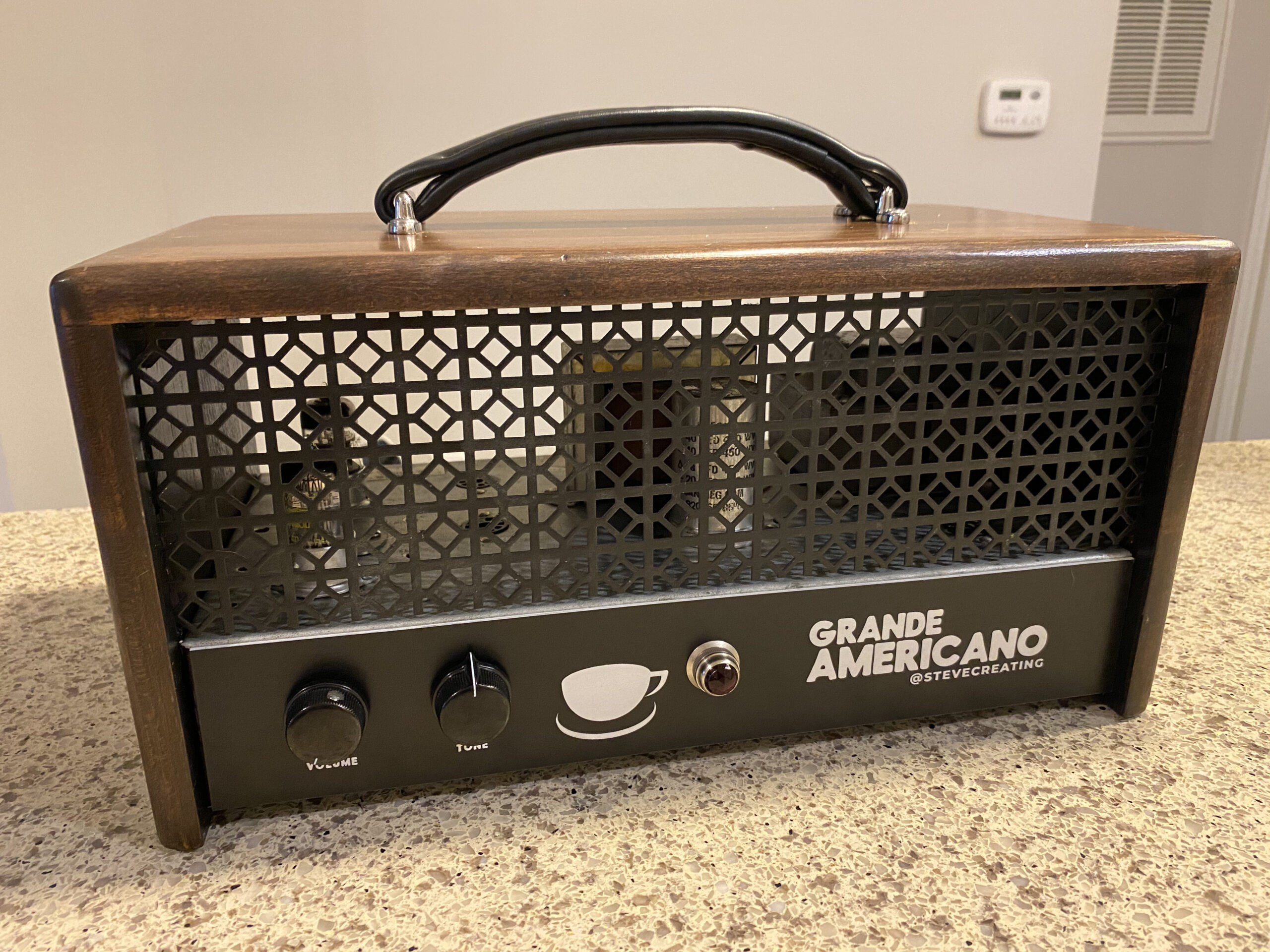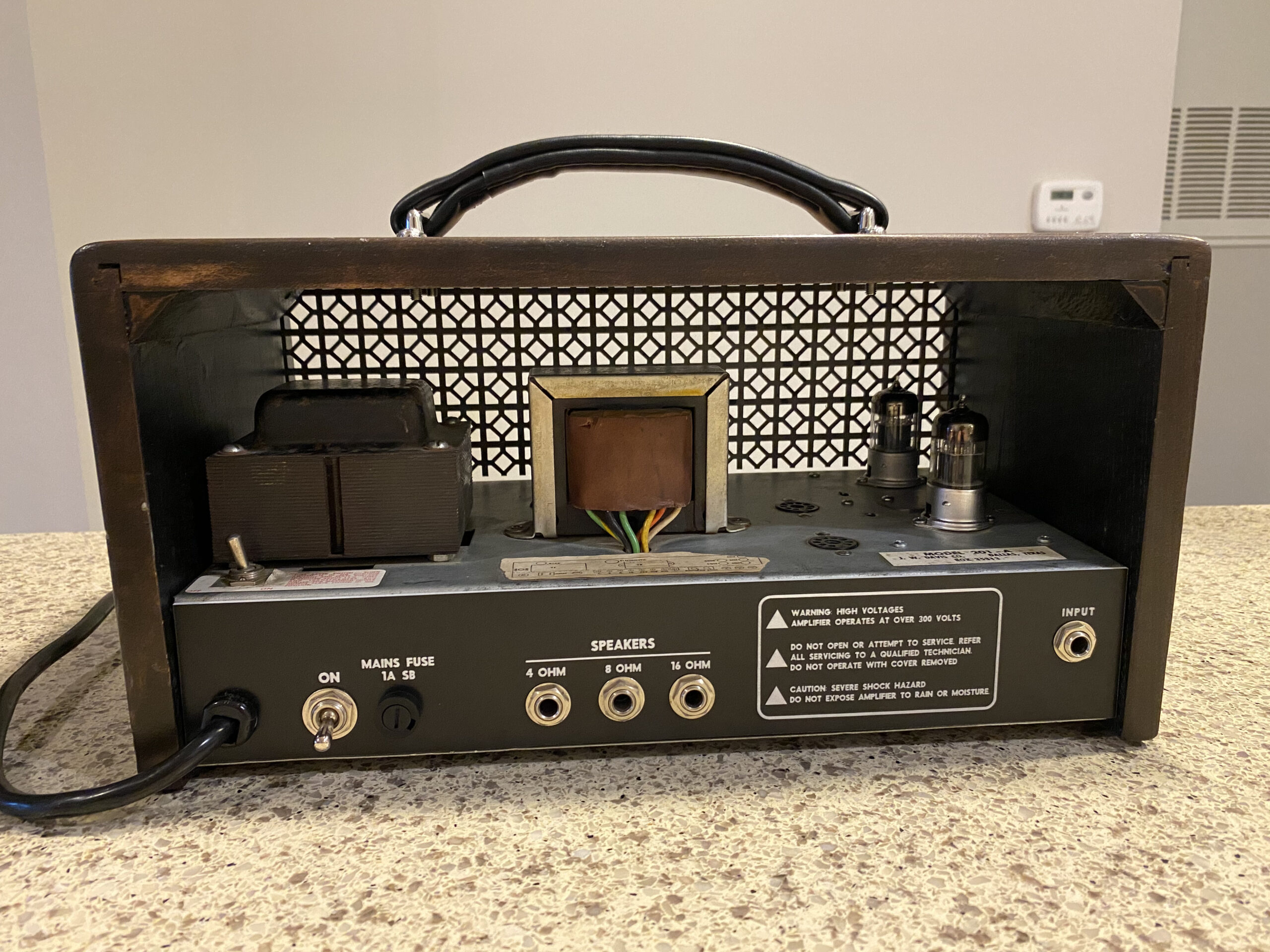I came across an old Davis 201A PA amplifier somewhere, I can’t really remember how I found this one. From the looks of it, somehow had started tweaking it for guitar but looks like something failed. There were a few spots where it looked like a resistor burned up leaving behind scorch marks on the chassis. So given all the factors I figured it was best to strip it down to an empty chassis and start from scratch.
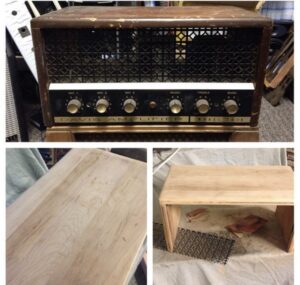
Stripping the chassis
So first things first, it was time to strip out the chassis. There were a lot of mixed components, some damaged resistors, so rather than try to undo the work out correct, it made more sense to pull everything out. I ended up replacing some of the preamp tube sockets that were messed from previous work. Rather than try to find a new can cap for the build I decided to leave the cap physically installed in the chassis but removed the terminals inside as I would be using modern axial caps for the build. I chose to go with a terminal strip style assembly since I wanted to keep the build simple. Looking at the rear panel, there screw terminals for selecting the speaker load for the output section. Since I didn’t plan on keeping the amp, I chose to remove the old terminal and install Switchcraft jacks in the chassis and cover the rectangular hole with a new rear panel that I would design later.
Deciding on what to build
Around this time my designs were trying to put every voicing a player could want in an amp. So the original design was going to have two channels, one based on a tweed deluxe and the other some kind of classic Marshall sound. After I built out the power supply and output section, I was part way through the build when I decided the build should be kept simple. Playing around with a few ideas I landed on the idea of what if a tweed deluxe and a Matchless Spitfire were to be melded together? And that’s what I went after.
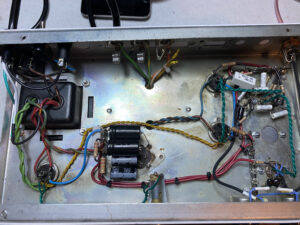
Faceplates
After finished up the build and giving a thorough listening, it was time to design the new faceplates and give the amp a name. But what to call it? Going back and forth I figure I would base it around one of my favorite things. Coffee. Since I was combining an American circuit with a British circuit, I chose the Grande (medium sized drink and a medium powered amp) Americano. Yeah, I know, total dork but I didn’t care.
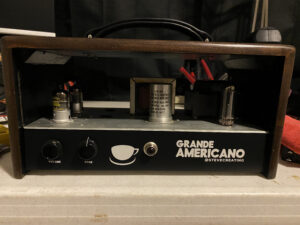
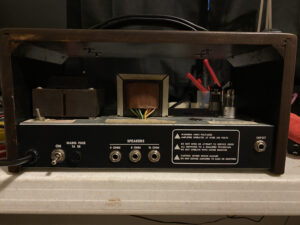
Final Thoughts and where is it now?
The amp was dialed in and reminded me of a Vox meets a Tweed Deluxe. Had a certain sound to it that sounded amazing and very versatile. I went with a cooler bias on the output tubes, somewhere around 80% dissipation, that allowed the EL84s to breath a little bit before breaking up. For my ears, when EL84s biased up to 100% or more, the breakup has the crackle to it that I am not really fond of. Besides, a cooler bias will have the tubes last longer and less of a chance of causing damage in the amp if it fails. I took the amp into work, I was working at Mojotone at the time, and let some of the players there give it a spin. Its pretty wild to hear all the different sounds that everyone was able to get out of it. Everything from glassy cleans to a screaming AC30. The amp was purchased by Justin, and now resides at his home studio.
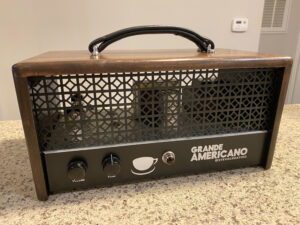
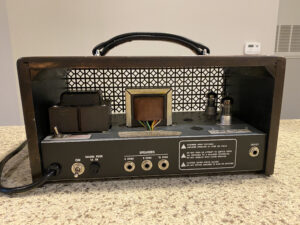
The Grande Americano amp that was made by Steve Snyder has quickly become my go to “secret weapon” This unassuming late 50’s PA conversion is an EL84 Driven Beast with split personalities of the best kind. The first half of the power band goes from surprisingly sparkling cleans to early British Grit. Push it past the halfway point and each small turn adds another glorious layer of rich tube saturation. This amp is perfect for studio recording and it is a pleasure to dail in live as well. The tone sweep is very articulate and with a single tone knob the noticeable bass punch and mid growl is very impressive and remains in almost all usable settings.
Justin Cody Fox
www.justincodyfox.com
